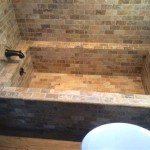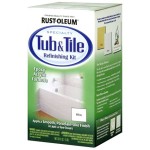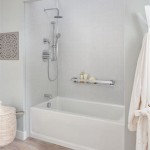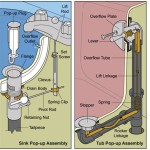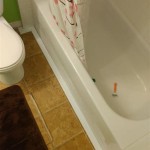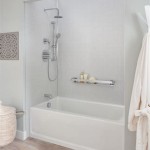Bathtub Drain Switch Up or Down: A Definitive Guide
Bathtub drain switches play a crucial role in controlling the flow of water in your bathtub. However, determining whether the switch should be placed in the "up" or "down" position can be confusing. In this comprehensive guide, we will explore the essential aspects of bathtub drain switch orientation, providing clear explanations and practical advice to help you make the right choice for your specific setup.
Drain Switch Mechanism
Bathtub drain switches typically consist of a small lever or knob that activates a flapper valve located at the bottom of the drain. When the switch is in the "up" position, the valve is open, allowing water to drain from the bathtub. Conversely, when the switch is in the "down" position, the valve is closed, preventing water from draining.
Switch Orientation for Different Drain Types
The orientation of the drain switch depends on the type of drain you have in your bathtub:
- Trip Lever Drain: For trip lever drains, the switch is typically located on the overflow plate, which is the small opening near the top of the bathtub. The switch is usually a small lever that is pushed down to open the drain and up to close it.
- Pop-Up Drain: Pop-up drains have a small stopper that is raised or lowered to control the flow of water. The switch is usually located on the top of the drain and is pushed down to close the drain and up to open it.
- Toe-Touch Drain: Toe-touch drains are operated by lightly pressing on the top of the drain stopper. In this type of drain, the switch is not directly visible and the orientation does not matter.
Determining the Correct Position
Once you have identified the type of drain you have, you can determine the correct switch position:
- Trip Lever Drain: The switch should be in the "up" position when the bathtub is empty and in the "down" position when the bathtub is full and ready to drain.
- Pop-Up Drain: The switch should be in the "down" position when the bathtub is empty and in the "up" position when the bathtub is full and ready to drain.
- Toe-Touch Drain: The switch does not have a specific orientation as it is operated by pressing on the drain stopper.
Troubleshooting Drain Switch Issues
If your bathtub drain switch is not working properly, here are some troubleshooting tips:
- Check the lever or knob: Ensure that the switch is not loose or obstructed.
- Inspect the flapper valve: Check if the flapper valve is damaged or stuck. Replace it if necessary.
- Clean the drain: Blockages or debris in the drain can prevent the switch from functioning correctly.
Conclusion
Understanding the orientation of your bathtub drain switch is essential for controlling the flow of water effectively. By following the guidelines outlined in this article, you can ensure that your drain switch is working properly and that your bathtub functions as intended. Remember to consult with a qualified plumber if you encounter any persistent issues with your drain switch.

Drain Overflow Assemblies Fine Homebuilding

Drain Overflow Assemblies Fine Homebuilding

How A Bathtub Works Types Plumbing Diagrams Hometips

Bath Tub Trip Lever Stopper Replacement Or Adjustnment
How To Stop My Bathtub Drain Take A Bath Quora

That Your Tub Doesn T Hold Water 2 Trip Lever Fixes

How To Unclog A Bathroom Drain

How To Adjust Bath Tub Drain Trip Lever
:max_bytes(150000):strip_icc()/bathtub-drain-stopper-types-2718995-01-35b72b9323884e12bcd7bff7bddc755e.jpg?strip=all)
The 7 Common Types Of Bathtub Drain Stoppers

How To Use Plumber S Putty In A Bathtub Drain Ehow

